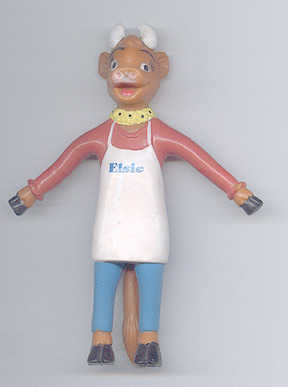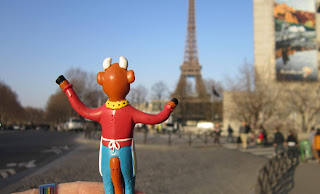The Study in England program took us on another fine one day field trip via coach (bus) to Bath and Stonehenge.
The city of Bath is a World Heritage site located in Somerset, England. It is the location of the only hot springs on the island and has been treated as a shrine for thousands of years. The Romans built a huge temple which was dedicated to Minerva but prior to that, Iron Age Britons dedicated it to the Goddess Sulis. The temple which is open to visit was originally constructed in 60-70 AD. Over the next 300 or so years, rooms for different temperature baths and other uses were added. Floors were created by piling stone tiles at various heights over the water so that there would be enough air circulating between the water and the floor to prevent people from burning their feet. The spring still produces hot water at a temperature of 115 °F and rises at the rate of 257,364 gallons every day.
The city of Bath has many buildings in the Georgian architectural design which was popular between 1720 - 1840. According to Wikipedia, this architectural style coincides with the first four British monarchs of the House of Hanover—George I of Great Britain, George II of Great Britain, George III of the United Kingdom, and George IV of the United Kingdom—who reigned in continuous succession from August 1714 to June 1830.
While in Bath, we ran across a couple of pig sculptures from a trail building project a few years back. We just couldn't help but take a few pictures of of them.
After a lunch in Bath, we all climbed back on the coach for a ride to Stonehenge. This is even more impressive than I thought it would be. Also a World Heritage site, it is believed to have been begun some 3100 BC with the earthwork comprising a ditch, bank, and the Aubrey holes. The Aubrey holes are round pits in the chalk with steep sides and flat bottoms. After this construction, it was left untouched for over 1000 years.
The second stage in construction started around 2150 BC. Some 82 bluestones from the Preseli Mountains in southwest Wales were transported to the site. The distance from Stonehenge is nearly 240 miles and is close to the place we visited in Wales. They were probably moved by raft and on rollers. Once on site, these stones were set up in the center to form an incomplete double circle.
More changes were made about 4000 years ago when stones were brought from about 25 miles north of Stonehenge. The largest of these weighs 590 tons and transportation by water would have been impossible, the stones could only have been moved using sledges and ropes.
The final changes took place soon after 1500 BC when the bluestones were rearranged in the horseshoe and circle that is seen today. The original number of stones in the bluestone circle was probably around 60; these have long since been removed or broken up.
Seeing these ancient sites is very humbling. They stones were lifted and fitted, obviously without the use of machinery as we know it. The drive and determination shown by the people who constructed these places of worship, respect for their beliefs or understanding of their world is astonishing. While we will never know the true reason for their action it is a thrill to walk on the land and see the work that they created.

Sunday, April 22, 2012
Sunday, April 15, 2012
Paris - The City of Light
I would like to say that we took Paris by storm but, that wasn't the case. Instead, we took a taxi, train, tram, plane, train and subway to Paris. It seemed more difficult than it should be and, indeed it was.
When we stepped out of the subway station, this was the view we had:
Yes indeed, we were in Paris, France. As you can see, we were right by the Eiffel tower which means we were also right by the River Seine. We arrived a little late in the afternoon but still had time for a walk around the neighborhood and some food and wine at a sidewalk cafe. When we were nearly to our hotel, we turned to look at the tower and it's lights were flickering (which it does once an hour after dark we later found out).
On our first full day, we walked to the Arc de Triumph. Which was begun being built by Napoleon in 1806 and not completed until 1836, long after his death. The names of 128 battles of the first French Republic and Napoleon's Empire are written on the white walls under the vault together with the names of the generals who took part in them. On May 8 each year it plays a central role in the VE Day (WWII Victory in Europe) celebrations; on July 14 it hosts an event to mark Bastille Day, and Napoleon's victory at the Battle of Austerlitz in 1805 is marked at the foot of the arch on December 2. Beneath the arch is the Tomb of the Unknown Soldier, a victim of World War I, who was buried on November 11 1920 and where Remembrance Day events are held every year. A Memorial Flame above the tomb is lit at 6:30pm every day.
Fortunately, we missed all of these major events and yet still there were many people visiting the Arc when we were there. It is a most impressive monument with plaques and names of many well known battles and soldiers.
The Arc de Triumph is at one end of the well known Champs Elysees. This is a major shopping area and as most of you know neither of us are big shoppers. The guidebooks call it retail therapy. We just took the walk and did a little window shopping and found it all very pleasant. The French always seem to make the most of every little green space by planting gardens or installing a statue or fountain.
Along the way we stopped at the Musee de l'Orangerie. This museum was chosen and arranged by Claude Monet to display his “testamentary” masterpieces which were quite wonderful. We began our visit in the lower level and saw many works by well know artists including Cezanne, Renoir, Picasso, Matisse, Modigliani and Utrillo. During the 1920s, the state of France built a pair of oval rooms at the Musée de l'Orangerie as a permanent home for eight water lily murals by Monet. The exhibit opened to the public on 16 May 1927, a few months after Monet's death. This display is overwhelming. We entered the first oval room and our jaws dropped. As we sat and studied the paintings, we noticed that many of the visitors had the same reaction. Seeing these murals was definitely a high point of our visit to Paris.
We continued our walk that day through the West Bank neighborhood and had a simple meal where we learned to pronounce 'Bearnaise'. It's Bear Neez not Beer Neas. Just saying. Our waiter corrected us but also would wink every time he did. I (Anne) have determined that my French accent is sorely lacking and everything I say has a distinct twang or reverts to some accent sounding like poor Italian. Oh well.
On our second day, we used the Batobus as our main mode of transportation. This is a 'hop-on/hop-off' boat that runs on the Seine. We stopped at the Musee d Orsay but didn't visit it because of the long queue. We decided that if we stood in the line and saw the exhibit, we would not see anymore of Paris so we hopped back on the boat and went to Notre Dame.
This huge old icon of the Catholic Church, Notre Dame was interesting to visit. It was a Sunday so there was a service going on as we tourists shuffled quietly around the outer edge of church looking at the saints buried there. The high profile saints had more costly candles to light than the lesser known ones. Joan of Arc commanded 5 euros for a votive - too bad they had to burn her at the stake before she got beatified. We were a bit taken aback that there were machines that make a medal from a coin right in the midst of the crypts, and then a gift shop at the end of our tour - which was in the back of the church where the service was going on. Once we got out of the church we saw three police officers on bicycles texting (or playing Angry Birds) while they were watching for pick pockets.
We then jumped back on the boat to travel to the neighborhood where our niece Laura had lived last year - she directed us to a great felafel shop (New York Times reviewed). We loved this neighborhood and had a great time there. It is the old Jewish quarter and has narrow streets and lots of activity. Some buildings were decorated with terrazzo tile. Many people out walking around, eating this and that from the small shops that were everywhere; clearly also a gay neighborhood.
Then as we were eating our felafel we started hearing drums and walked over to see a parade of drummers who were moving through the streets picking up followers as they went. We are still not exactly sure what it was but there was something about Le Femmes and we had a great time following them through the neighborhood.
more parade
As we were leaving the neighborhood, we came across this chocolate fountain in a candy store window and wondered if we were making the right decision in leaving the area.
On the way back from the very cool neighborhood party, we stopped at the Louve but didn't have the time or energy to go inside. The gardens are very nice and filled with marvelous sculptures Next time we will go inside and see the Mona Lisa and all of the other famous pieces of art that they have on display.
After we had another dinner at a sidewalk cafe, we stopped for a glass of wine at a bar that looked out over the Eiffel tower on our last night in Paris. We will have to return but this was a great trip.
Subscribe to:
Posts (Atom)
